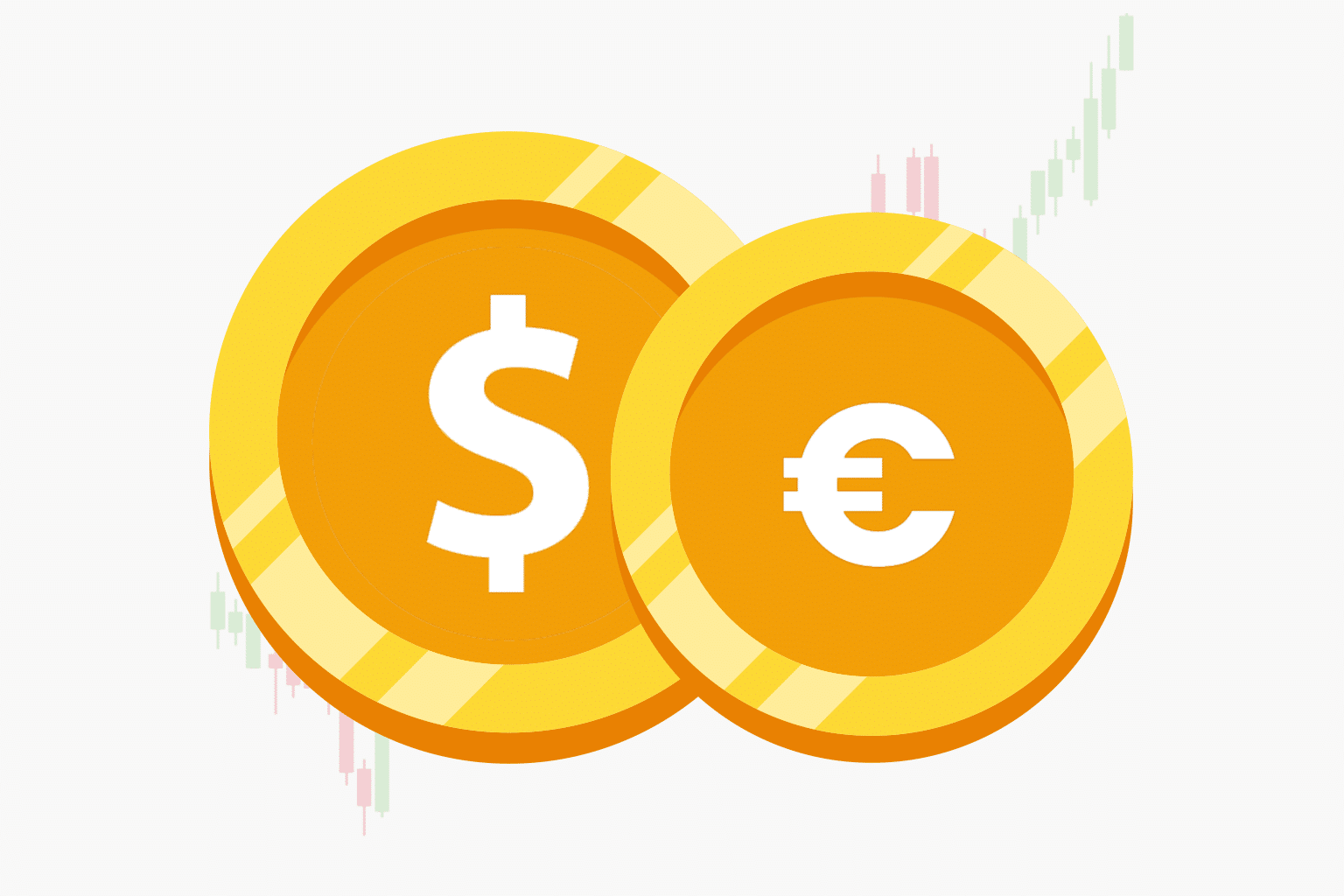The EUR/USD currency pair represents the exchange rate between the Euro and the US Dollar, showing how many dollars one euro can buy. This pair ranks as the most traded currency pair in the global forex market, accounting for roughly 20-25% of all foreign exchange transactions daily.
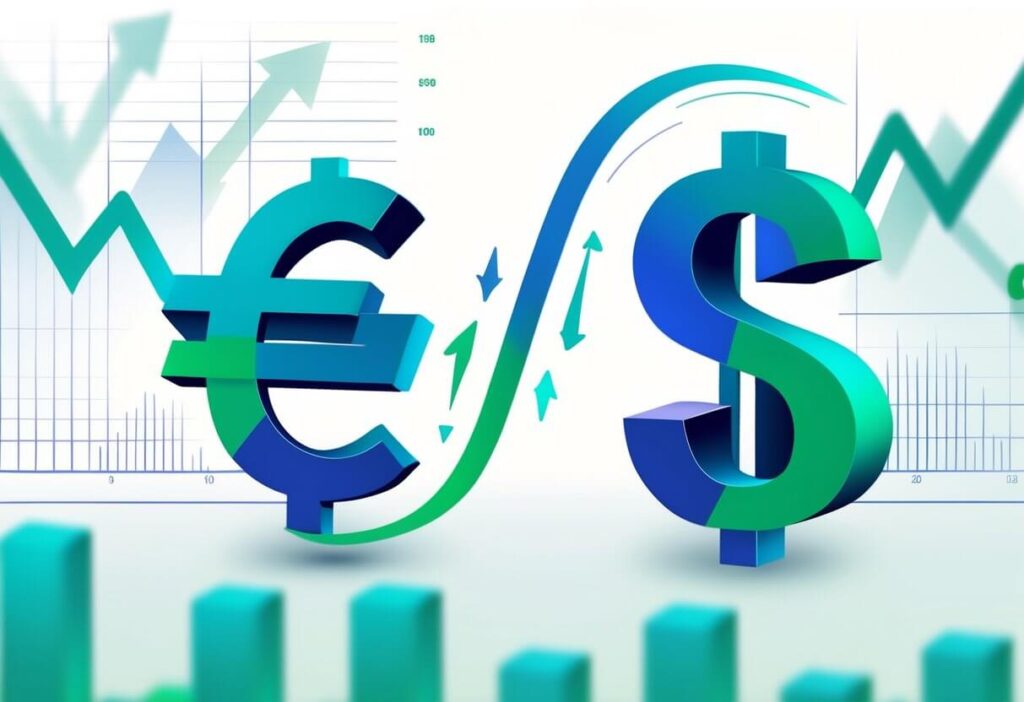
The current EUR/USD rate fluctuates around 1.16-1.17 range, meaning one euro equals approximately 1.16 to 1.17 US dollars. I’ll provide you with real-time pricing data and the key factors that drive these price movements throughout each trading session.
Understanding EUR/USD price dynamics requires knowledge of both European and American economic indicators, central bank policies, and global market sentiment. I’ll walk you through the live price feeds, trading hours, major price drivers, and answer the most common questions traders have about this essential currency pair.
Live EUR/USD Price & Change
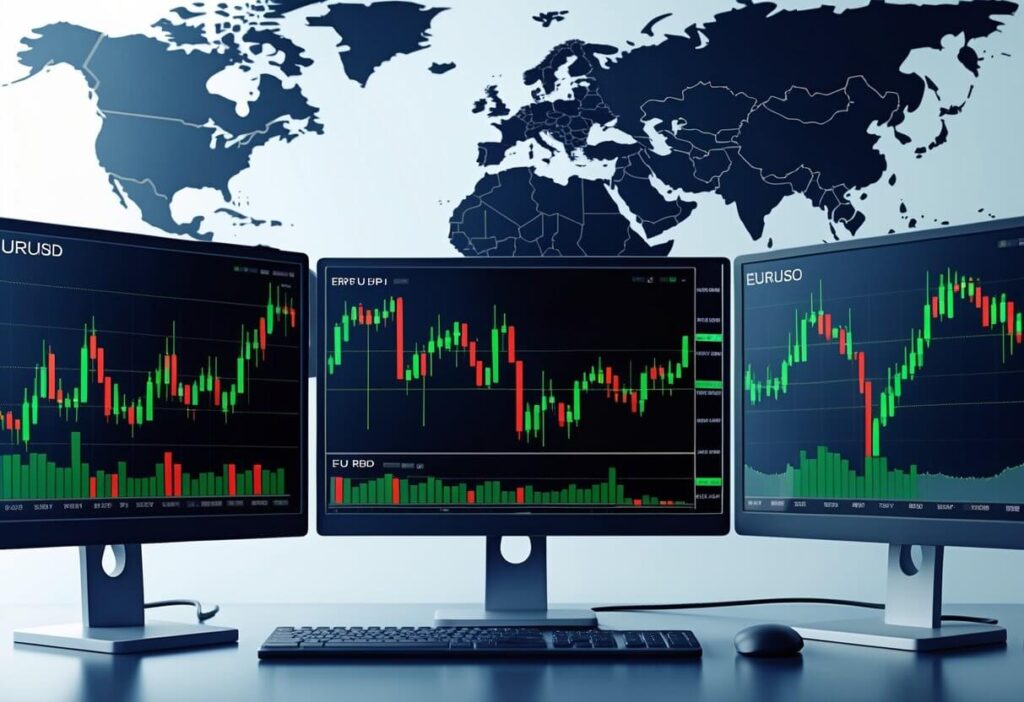
The EUR/USD exchange rate fluctuates throughout trading sessions based on market conditions and economic factors. Current data shows the pair trading with real-time price movements that can be tracked through both short-term intraday charts and longer-term historical analysis.
Intraday Chart (1 Day)
I observe that live EUR/USD rates provide real-time price updates throughout the trading day. The intraday chart displays minute-by-minute price movements from market open to close.
Key intraday features include:
- Price fluctuations during active trading hours
- Volume indicators showing market participation
- Support and resistance levels formed during the session
I find that EUR/USD live charts update every few seconds during market hours. This allows me to track immediate price changes and identify short-term trading opportunities.
The intraday data reveals how the EUR to USD rate responds to news releases, economic announcements, and market sentiment shifts. Price volatility typically increases during European and U.S. trading overlaps.
Historical Chart (1 Year)
My analysis of the one-year EUR/USD chart shows broader price trends and significant support/resistance zones. Historical EUR to USD data reveals how the pair has performed across different market cycles.
Annual chart elements I monitor:
- Major trend direction over 12 months
- Seasonal patterns and cyclical movements
- Key turning points and breakout levels
I can identify long-term price ranges and potential reversal zones using yearly data. The historical perspective helps me understand whether current EUR/USD levels represent value or overextension.
Monthly price swings often correlate with central bank policy decisions, economic growth data, and geopolitical events affecting both eurozone and U.S. markets.
Key Stats (Bullets)
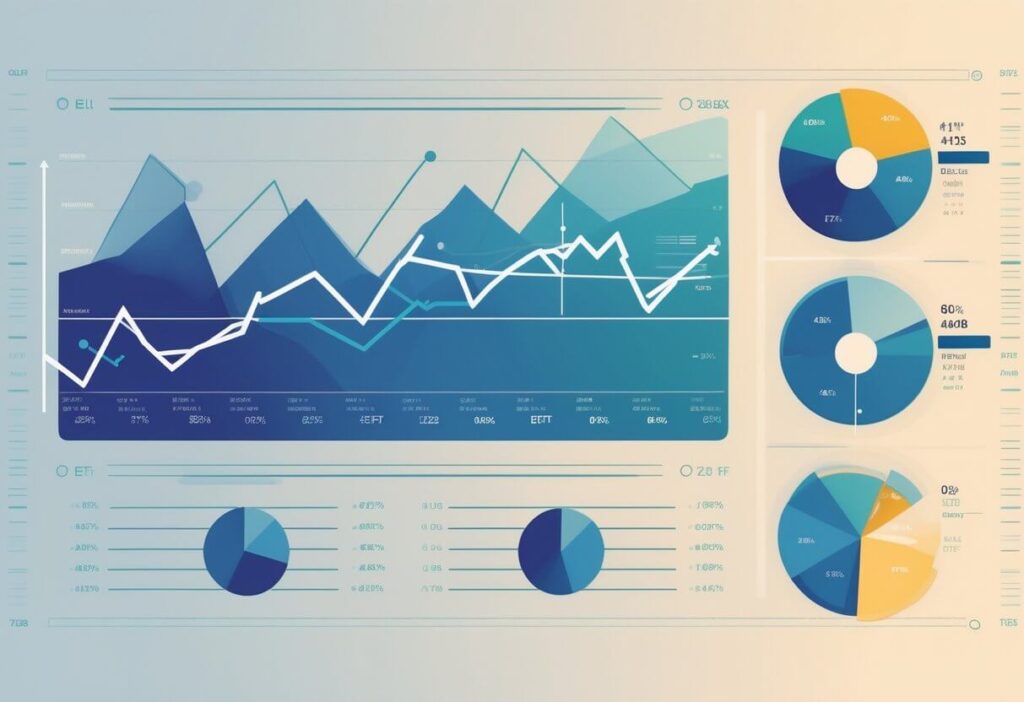
Current Trading Range: EUR/USD continues trading within the 1.0920 – 1.0980 range, representing key confluence levels.
Recent Price Action: • Trading above 1.1700 in European sessions • Testing key support near 1.1320 with bullish momentum intact • Anchored around 1.10 support level as crucial directional indicator
Technical Indicators: • RSI: Above 50 level, indicating bullish bias • Moving Average: Nine-day EMA providing support, 200-period SMA cleared • Pattern: Ascending channel formation maintained
Weekly Performance: Euro gained 0.60% against USD, showing strongest performance versus Canadian Dollar.
Key Resistance Levels: • 1.1760 (static level) • 1.1800 (round number) • 1.1830 (July 1 high)
Support Zones: • 1.1660-1.1650 (200-period SMA) • 1.1620 (100-period SMA) • 1.1540 (Fibonacci 38.2%)
I observe the pair maintains a buy bias above key moving averages. The technical setup suggests potential for continued upward movement, though traders should monitor support breaks that could shift sentiment toward sell signals.
Latest News & Drivers

I’m tracking several key developments that are moving EUR/USD markets right now. The most significant driver comes from recent US employment data showing weaker-than-expected job creation.
July’s nonfarm payrolls added only 73,000 jobs, well below the 110,000 consensus. This disappointing figure triggered a major shift in Fed rate cut expectations, with traders now pricing in 63 basis points of cuts by year-end.
The unemployment rate ticked higher to 4.2 percent. This data pushed the US Dollar Index from 100.10 down to 98.60, creating tailwinds for EUR/USD.
Central bank divergence is becoming more pronounced. Markets assign a 60 percent chance of an ECB rate cut by December, compared to 81 percent for the Fed in September.
| Central Bank | Rate Cut Probability | Timeline |
|---|---|---|
| Federal Reserve | 81% | September |
| European Central Bank | 60% | December |
I’m also monitoring geopolitical factors that are adding volatility. Recent threats of 20 percent tariffs on EU exports have injected uncertainty into currency markets.
Key economic indicators like GDP growth rates and purchasing managers’ indices remain crucial short-term drivers for EUR/USD price action.
Eurozone inflation held at 2.0 percent in July, slightly above ECB forecasts of 1.9 percent. This modest overshoot supports the euro’s current strength against the dollar.
What Moves EUR/USD?
I’ve observed that the EUR/USD pair responds to several key factors that create volatility and drive price movements. Understanding these elements helps me anticipate potential market shifts.
Central Bank Policies represent the most significant driver. When the Federal Reserve or European Central Bank adjusts interest rates, I see immediate impacts on the exchange rate. Higher rates typically strengthen the respective currency.
The EUR/USD pair reacts quickly to global news and economic reports. I monitor these critical data releases:
- Non-Farm Payrolls – US employment data
- Inflation reports (CPI, PPI)
- GDP growth figures
- Manufacturing PMI data
Economic indicators from both regions create immediate price reactions. I notice that stronger-than-expected US data often pushes EUR/USD lower, while positive European data supports the pair.
Geopolitical events add another layer of complexity. Political elections, trade negotiations, and international tensions influence risk sentiment and currency flows.
Market sentiment plays a crucial role in my analysis. During risk-off periods, investors often flee to the US dollar as a safe haven, pressuring EUR/USD downward.
I pay close attention to central bank communications. Fed and ECB officials’ speeches frequently hint at future policy directions, creating anticipation and volatility before official announcements.
Technical levels also matter. Key support and resistance zones can amplify or dampen fundamental movements, creating additional trading opportunities in this highly liquid pair.
Trading Hours & Settlement
EUR/USD trading operates nearly 24 hours a day across multiple global markets. The CME Group offers EUR/USD futures trading from Sunday through Friday, 5:00 p.m. to 4:00 p.m. CT with a 60-minute break.
Different exchanges maintain varying schedules for EUR/USD trading. IFC Markets provides EUR/USD trading hours Monday through Friday from 00:00 to 23:00, with brief breaks from 23:15 to 24:00.
Key Trading Sessions:
- Asian Session: Opens Sunday evening in Western time zones
- European Session: High liquidity during London hours
- American Session: Overlaps with European close
The Dubai Gold & Commodities Exchange operates EUR/USD futures from 07:00 to 23:55 Dubai time. Thailand Futures Exchange offers morning sessions from 09:45 to 12:30 and afternoon sessions from 13:15 to 13:45.
Settlement procedures vary by exchange and contract type. Most EUR/USD futures contracts settle financially rather than through physical delivery of currencies.
Settlement Features:
- Daily mark-to-market for futures positions
- Cash settlement at contract expiration
- T+2 settlement for spot forex transactions
Trading volume peaks during overlapping sessions when both European and American markets are active. I observe that institutional trading often concentrates during these high-liquidity periods to minimize market impact.
Related Indices & ETFs
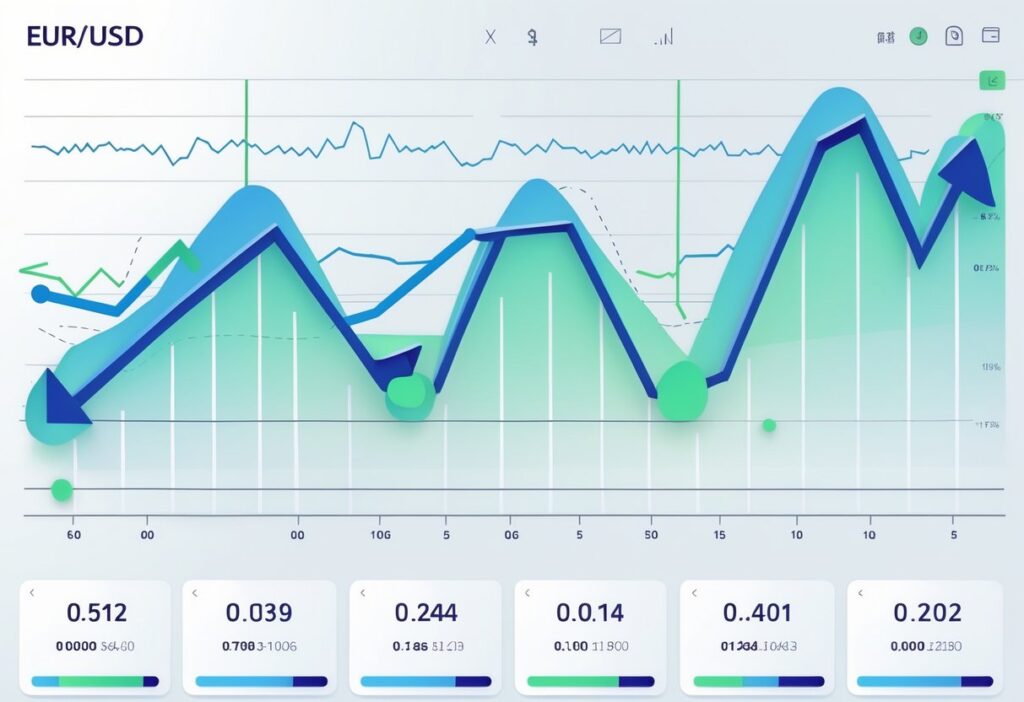
I found several investment vehicles that track EUR/USD movements and European markets. These instruments provide exposure to the euro-dollar exchange rate without direct forex trading.
Direct EUR/USD Tracking:
- iPath® EUR/USD Exchange Rate ETN offers direct exposure to the EUR/USD exchange rate
- Multiple EUR/USD futures contracts trade with different expiration months
European Market ETFs:
- iShares Core MSCI Europe ETF provides broad European equity exposure
- Various Euro-denominated ETFs track different aspects of European markets
Currency Index Options:
| Index Type | Description |
|---|---|
| Euro Currency Index (EXY) | Measures euro strength against major currencies |
| EUR/USD Futures | Direct currency pair exposure with leverage |
I notice that the Euro Currency Index typically moves inversely to the US Dollar Index. This relationship helps traders understand broader currency trends.
Available Instruments:
- Rolling spot futures for continuous exposure
- BMF-listed EUR/USD contracts in Brazilian markets
- European exchange-traded products through Euronext platforms
These instruments vary in their expense ratios, liquidity, and tracking methods. I recommend comparing costs and performance before selecting any EUR/USD-related investment vehicle.
Common Questions On EUR/USD Price Data
EUR/USD price data updates continuously during market hours with real-time streaming quotes. The forex market operates 24 hours during weekdays but closes on weekends when institutional liquidity disappears.
How Often Is The Price Updated?
EUR/USD prices update continuously in real-time during active trading hours. Most forex brokers and data providers stream live quotes every few seconds or even milliseconds.
The EUR/USD exchange rate changes constantly as buyers and sellers execute trades. Major trading platforms display these price movements as they happen.
Trading Session Schedule:
- Asian Session: 6:00 PM – 3:00 AM EST
- European Session: 2:00 AM – 12:00 PM EST
- North American Session: 8:00 AM – 5:00 PM EST
Price updates occur most frequently during overlapping sessions when trading volume peaks. The European-North American overlap typically sees the highest activity and most rapid price changes.
Data feeds can vary between providers. Some offer tick-by-tick updates while others refresh every 15-30 seconds for basic accounts.
Why Doesn’t The Index Trade On Weekends?
EUR/USD trading halts on weekends because major financial institutions and banks close their trading desks. The forex market requires institutional liquidity to function properly.
Trading stops Friday at 5:00 PM EST and resumes Sunday at 6:00 PM EST. During this 48-hour gap, no new price quotes generate because insufficient participants remain active.
Weekend Closure Reasons:
- Banks close their dealing rooms
- Institutional traders are offline
- Limited liquidity creates volatile conditions
- Settlement systems require maintenance time
Some brokers may show static prices during weekends, but these don’t reflect actual tradeable rates. Any weekend price movements typically appear as gaps when markets reopen Sunday evening.
Holiday schedules can extend weekend closures. Major holidays in the US or Europe often result in reduced trading hours or complete market shutdowns.
Can I Trade The Index Directly?
I cannot trade EUR/USD as a traditional index because it represents a currency pair, not a basket of securities. However, I can trade the EUR/USD exchange rate directly through various financial instruments.
Available Trading Methods:
- Spot Forex: Direct currency exchange
- CFDs: Contract for Difference trading
- Spread Betting: Price movement speculation
- Futures Contracts: Standardized exchange-traded products
Spread betting and CFD accounts allow me to go long or short on EUR/USD price movements. When the quote shows 1.1650, I need $1.1650 to buy one euro.
Most retail traders access EUR/USD through forex brokers rather than direct interbank markets. These brokers provide leverage, smaller position sizes, and user-friendly platforms.
Currency ETFs offer another indirect method to gain EUR/USD exposure, though they may not perfectly track the exchange rate due to fees and tracking differences.

